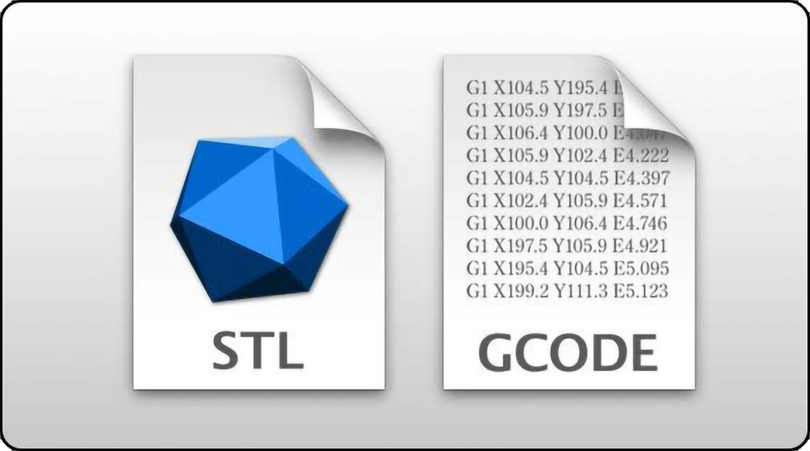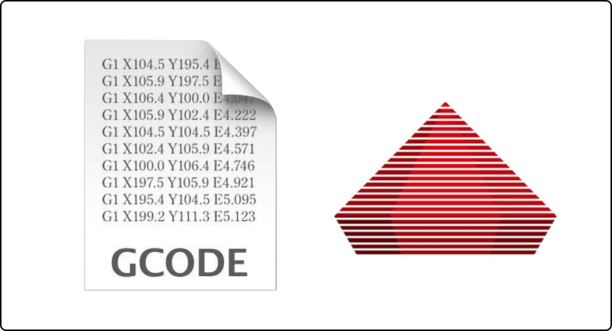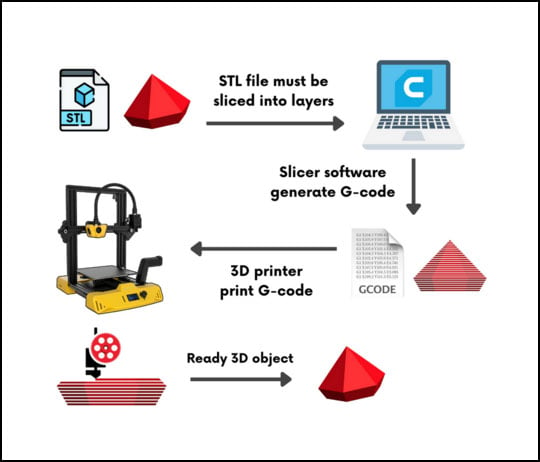Không có sản phẩm trong giỏ hàng!

What Is the Difference Between STL and G-code?
- Abdulrahman Alhamed
- 23 Aug 2022
- 3360

Although 3D printing users always deal with STL files and G-code, they confuse between them. So what is the difference between STL and G-code?
STL File

STL stands for STereoLithography, a 3D printing process and corresponding file type created by Chuck Hull at 3D Systems in the 1980s). The STL file format is the most commonly used file format for 3D printing. When used with a 3D slicer software, it allows the computer to communicate with a 3D printer.
The STL file format has been adopted and supported by many CAD software. Today it is widely used for rapid prototyping, 3D printing, and computer-aided manufacturing.
STL files represent 3D models. They cannot be 3D printed in themselves. This format describes only the surface geometry of a 3D object without representing color, texture, or other common model attributes.
G-code File

In simple words, a G-code is a programming language that tells the printer what to do. These actions can include where the printer nozzle goes, extruder temperature, bed temperature, pauses, printer head speed, etc.
G-codes are actually used for a variety of machines, not just 3D printers! Cutting tools like lathes and mills also rely on G-codes. You can view the G-code file on your computer using a text editor.
An STL file must be sliced into layers, these layers represent G-code. A printer can only read G-code file.
How They Work in 3D Printing?

An STL file must be sliced into layers using a slicer software (Like Cura). G-code will be generated from the slicing software. Finally a 3D printer can read and print the G-code.
Related Products
Artillery Genius Pro 3D Printer - Partially Ass...
Không có sẵn
Artillery Sidewinder X2 3D Printer - Partially ...
Không có sẵn
Artillery Hornet 3D Printer - Partially Assembled
Không có sẵn
 International
International Singapore
Singapore Malaysia
Malaysia Thailand
Thailand Vietnam
Vietnam


-268x268.jpg)